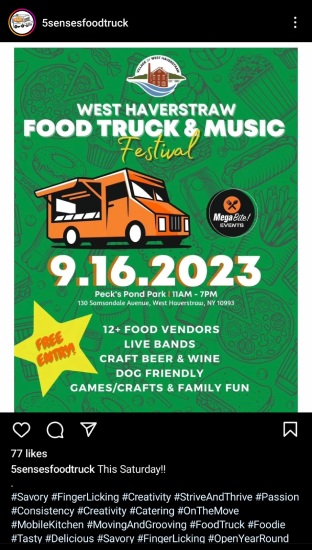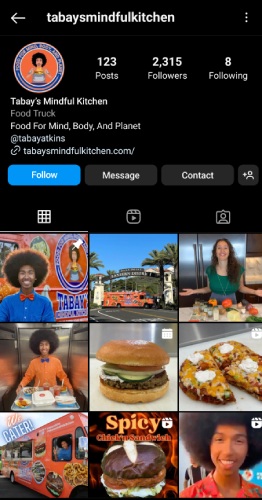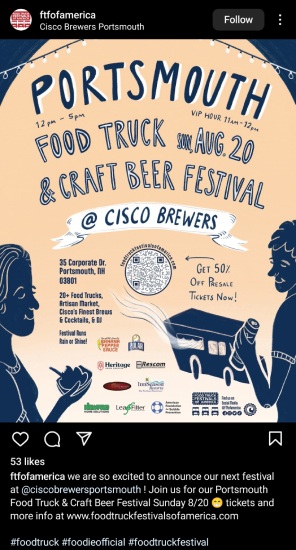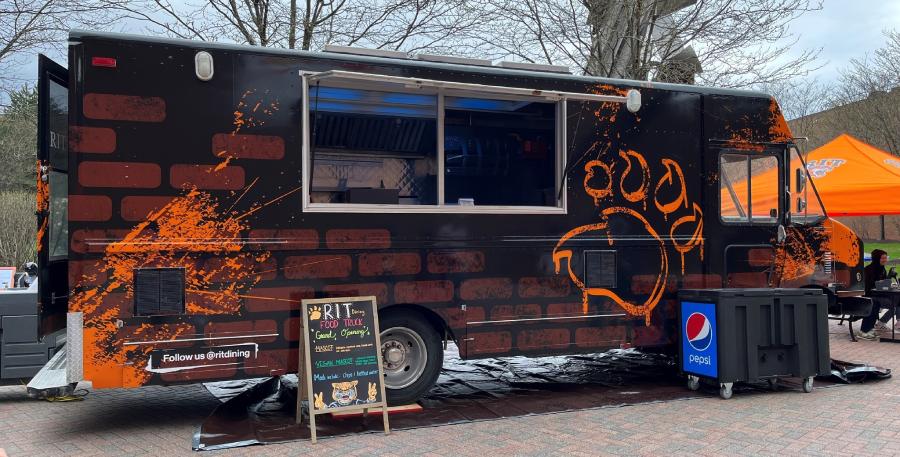The food truck industry continues to grow—according to the latest food truck industry statistics, the number of food trucks has increased by nearly 10% from 2022 to 2023. Successful food trucks have the potential to generate over $500,000 in annual revenue, with startup costs as low as $40,000. It’s still a great time to start a food truck business.
But success isn’t as simple as opening your doors. You need to promote and market your food truck business. Effective food truck marketing requires a plan of digital strategies, traditional promotional methods, and good old-fashioned word-of-mouth campaigns. To help you thrive, we’ve compiled eight essential tips for how to advertise your food truck.
KEY TAKEAWAYS:
- Choose the right technology platforms to engage with potential customers and streamline operations.
- Participate in events and partner with other local businesses to reach a broader customer base.
- Active engagement on social media platforms and a strong brand identity help you stand out and connect with your audience.
- Expanding into catering services can open up new revenue streams and opportunities for growth.
1. Know Your Audience
Understanding your target audience is critical to any marketing strategy. The target market for fast food businesses is different from your food truck business, for example. So you’ll want to relate to and market to your specific audience, appealing to their wants and needs.
Analyze the demographics of your potential customers, such as age, gender, location, and preferences, and create customer profiles or personas. This information will guide your menu, pricing, and marketing efforts. Tailor your promotions to resonate with your specific audience, whether it’s health-conscious single millennials or families seeking quick, affordable meals.
2. Choose the Right Technology Platforms
Leverage technology effectively when it comes to executing your food truck marketing ideas. Embrace technology to streamline operations and enhance customer convenience:
- Set up a user-friendly website
- Use mobile apps for online ordering and payments
- Connect with customers on the go through social media like Instagram, Facebook, and TikTok
- Let customers find you through food truck locating apps like Where’s The Food Truck and Roaming Hunger
- Offer additional services like online ordering and catering bookings
A food truck point-of-sale (POS) system logs customer information, builds detailed customer profiles, and tracks customer interactions. The detailed customer information in your POS will help you do everything from connecting with customers to designing new menu items. Make sure your POS integrates with all your other platforms and marketing technology.
Check out these other tools and technologies to help with food truck advertising:
- Best SMS Marketing Software
- Best Social Media Marketing Tools
- Best AI Marketing Tools
- Best Email Marketing Software
- Best Customer Intelligence Platforms
3. Participate in Events
Participating in food festivals, local fairs, and community events can introduce your food truck to a new audience. These events provide an excellent opportunity to showcase your culinary talents, gain exposure, and build a loyal customer base. Use eye-catching signage and promotional materials to stand out in the crowd.
5 Senses Food Truck, for example, participated in its local food truck and music festival. This provided great exposure to an audience eager to dine at mobile restaurants.

4. Get Active on Social Media
Social media marketing is a powerful tool for food trucks. More than any other food business, food truck customers like to see your personality. Post appealing photos of your dishes, share customer reviews, broadcast events live, promote upcoming events, and interact with your followers. You can use popular food-related hashtags and local tags to increase visibility and engage with your foodie community.
Remember to respond promptly to comments and messages to foster a strong online presence. If you’re not getting much visibility or want to supplement your organic presence, you can also explore paid social media advertising and target specific audiences.
For example, Tabay’s Mindful Kitchen is a food truck owned and operated by a 17-year-old who isn’t scared to share its brand story publicly on social media.

Read our guide to creating a social media plan (plus free template) to successfully leverage social media platforms.
5. Implement a Rewards Program
Encourage repeat business by implementing a customer loyalty and rewards program. Offer discounts, freebies, or loyalty points to customers who frequent your food truck. A well-designed rewards program can turn occasional visitors into regulars and boost customer retention. Most food truck POS systems have loyalty tools, but you can also check out our roundup of the best customer loyalty program software to help bring your ideas to fruition.
Find more ideas for customer loyalty programs you can implement for your food truck.
6. Offer Catering
Catering is a great way to diversify your food truck revenue streams and bake in some predictability in your sales forecasting. Corporate events, weddings, and private parties are all opportunities to showcase your culinary expertise. Develop a catering menu and market it to event planners and businesses in your area.
My Treat Truck promotes its catering services all over its website. It offers options including parties, weddings, and corporate events.

7. Partner With Other Businesses
Business collaborations are a great way to share the workload and tap into an existing audience base. Partner with local businesses, such as breweries, coffee shops, or event venues, to cross-promote each other. Joint promotions, special events, or co-branded menu items can attract a wider customer base and increase your visibility within the community.
Food Truck Festivals of America, for example, partnered with Cisco Brewers for an event in Portsmouth, New Hampshire. It needed a venue, and Cisco benefited from the added visibility and foot traffic.

8. Develop a Strong Brand
Branding helps people recognize your business. Create a memorable brand identity for your food truck. Your branding should reflect your cuisine, personality, and values. Consistent branding, including logos, colors, and messaging, helps customers recognize and trust your brand. Use your truck to visually represent this brand identity.
Related:
- 10 Famous Brand Positioning Examples & Strategies
- How to Write a Brand Positioning Statement in 8 Steps (+ Template)
The RIT Food Truck has a strong visual brand, which was planned out visually for its truck. The design is eye-catching and cohesive on all sides of the food truck.

The RIT food truck stands out visually and stays true to its brand. (Source: RIT Dining Facebook page)
Food Truck Marketing Frequently Asked Questions (FAQs)
These are some of the common questions we hear about food truck marketing.
A combination of strategies including social media, events, partnerships, and catering are some of the main ways to market your food truck. Always tailor your approach to your target audience and location.
Some ways to attract more customers to your food truck are maintaining a strong online presence through social media, offering unique and delicious menu items, providing excellent customer service, and participating in local events to increase visibility.
- Define your target audience
- Set goals
- Choose the most relevant marketing channels
- Develop a budget
- Understand how to execute
- Evaluate and adjust based on performance
- Product: Your menu and offerings
- Price: Your pricing strategy
- Place: Your location(s) and hours
- Promotion: Your marketing and advertising efforts
Bottom Line
Effective food truck marketing requires a combination of digital marketing, traditional methods, and community engagement. By understanding your audience, leveraging technology, participating in events, staying active on social media, offering rewards, expanding into catering, partnering with other businesses, and developing a strong brand, you can effectively market your food truck and find success in this thriving industry. Every effort you invest in promoting your dishes can be a valuable step toward growing your business.